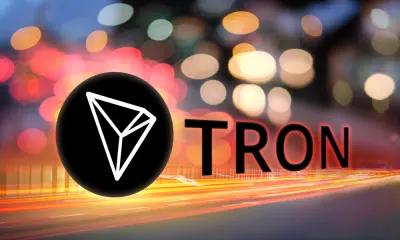Over the last couple of years, there has been a growing convergence of future-ready technologies like artificial intelligence (AI) and the blockchain, helping unlock the full potential of sectors ranging from finance and healthcare to supply chain management.
At the core of their synergy lies the concept of ‘data availability,’ with the coming together of these two seemingly disparate realms representing a major shift in how we approach data management, security, and analysis.
For instance, the blockchain provides a foundation of trust and transparency, offering an immutable and decentralized ledger for data storage, while AI systems thrive on vast amounts of data, using it to train algorithms, identify patterns, and generate valuable insights.
This symbiotic relationship has the potential to address some of the most pressing challenges permeating today's digital landscape.
For instance, in supply chains, blockchain can track the provenance of goods — ensuring that all stakeholders have access to the same verified information — while AI algorithms can analyze real-time data, significantly improving decision-making processes and operational efficiency.
In fact, several recent studies have noted that the aforementioned combination can enhance information resilience and product traceability greatly while also helping create more cost-effective delivery systems.
That said, the impact of this integration extends far beyond operational efficiencies. In the healthcare sector, for example, the marriage of AI and blockchain is rapidly facilitating the secure sharing of patient data while ensuring compliance with strict privacy regulations.
The potential for synergy is limitless.
The decentralized nature of blockchain provides an ideal environment for AI to operate in scenarios requiring high levels of trust and security. This is particularly evident in financial services, where the combination of AI and blockchain is streamlining processes like fraud detection and risk assessment.
By analyzing transaction data stored on the blockchain, AI can identify anomalies and predict potential risks with unprecedented accuracy, significantly enhancing security measures.
In fact, the economic potential of this technological convergence is staggering. Projections indicate that the global AI market could reach approximately $134 billion by 2025, while the blockchain technology market is expected to grow to $67.4 billion by 2026.
However, as with any technological advancement of this nature, there are still some challenges that need to be addressed. One of the most significant hurdles in realizing the full potential of AI and blockchain integration is the issue of ‘scalability.’
Traditional blockchain systems often struggle with the high-performance requirements of AI applications, particularly when dealing with large datasets and complex computations. This is where innovative solutions like 0G come into play.
At its core, 0G's unique architecture separates the workflow of data by handling large volumes of data transfers via a dedicated storage lane while horizontal scalability is achieved using a storage layer.
What sets 0G apart is its ability to guarantee data availability through consensus of data availability sampling. This process requires only minimal data flow through the consensus protocol, effectively avoiding the broadcasting bottleneck that plagues many traditional systems.
The result is a scalable Data Availability (DA) service layer that minimizes the data transfer volume required for broadcast.
0G's general decentralized storage design is another key factor since it enables support for a wide variety of availability data types, extending beyond Layer 2 (L2) networks to include decentralized AI infrastructures. This can help facilitate the creation of high-performance AI applications on-chain.
From a technical standpoint, 0G's performance metrics are quite impressive. While prominent players in the space, such as Celesta and Ivan da de Valle, have achieved processing rates of about 1.4 to 1.5 megabytes per second, 0G’s digital infrastructure is capable of producing speeds of about 50 gigabytes per second.
This staggering 50,000-fold increase, combined with costs that are approximately 100 times lower than competitors, opens up new possibilities for on-chain applications that were previously unfeasible.
The increased melding of AI and blockchain tech is inevitable.
Looking toward the future, there is enough data to suggest that the continued confluence of AI and blockchain technologies is inevitable. For instance, some studies have noted that the market for AI-blockchain-specific projects will grow to $705 million by the end of next year — driven largely by the increasing need for secure, transparent, and efficient data management models across various industries.
Blockchain-AI market size and future growth potential (source: Appinventiv)
Therefore, as we stand on the cusp of a new technological dawn, solutions like 0G are paving the way for a future where the true potential of AI and blockchain integration can be realized. By addressing the critical challenges of scalability and data availability, 0G is not just a mere participant in this space, it's ushering in a new era of high-performance, secure, and efficient data management/analysis.

 Nikolas Sargeant
Nikolas Sargeant







